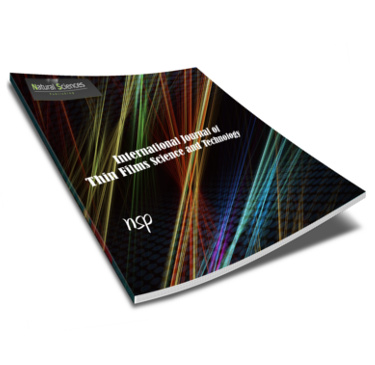International Journal of Thin Film Science and Technology

Abstract
Employing plants as corrosion inhibitors is a physical direction to detect less expensive green friendly inhibitors. Researchers found that the "Citrus aurantium leaves extracts are mixtures containing vitamins, minerals, phenolic compounds and terpenoids. The flavonoids contained in C. aurantium can be divided into four groups, including flavones, flavanones, flavonols, and anthocyanins." These compounds indicate the extracts of Citrus aurantium leaves are appropriate to be applied as green corrosion inhibitors. Extracts of Citrus aurantium leaves have been researched by utilizing EIS, gravimetric and SEM techniques as novel eco-friendly corrosion inhibitors for carbon steel in corrosive environments. Inhibition effectiveness of tested extract depends on different concentrations of extract, starting from 0 to 40% v/v. Inhibition effectiveness of 81.2% is reached at the concentration of 20% v/v of the extract in 1 M corrosive solution for three hours at 25℃. Temperature effects and activation parameters have been investigated. A theoretical investigation of Citrus aurantium leaves extract isomers as corrosion inhibitors have been done using DFT/ B3LYP "density functional theory." The results shows that, in general, Citrus aurantium leaves have good inhibiting activities at relatively low concentrations. Phenolic groups of Citrus aurantium leaves were picked for examination as substituents of the four inhibitors. Hydroxyl groups of the studied extract compounds result in an increase in inhibition effectiveness, while methylation of the hydroxyl group leads to decrease in inhibitive effectiveness. Citrus aurantium leaves extracted isomers symbolize a considerable enhancement in the inhibition performance.
Recommended Citation
S. Gaaz, Tayser; M. Dakhil, Rifat; M. Jamil, Dalia; A. Al-Amiery, Ahmed; Amir Kadhum, Abdul; and Takriff, Mohd
(2020)
"Evaluation of Green Corrosion Inhibition by Extracts of Citrus aurantium Leaves Against Carbon Steel in 1 M HCl Medium Complemented with Quantum Chemical Assessment,"
International Journal of Thin Film Science and Technology: Vol. 9
:
Iss.
3
, PP -.
Available at:
https://digitalcommons.aaru.edu.jo/ijtfst/vol9/iss3/7

